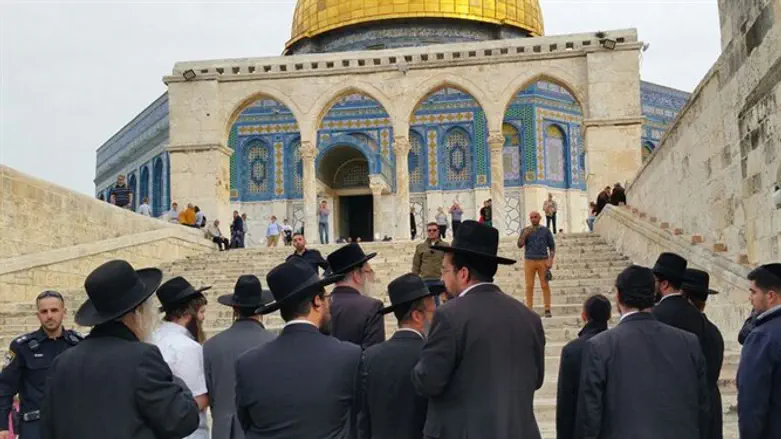
About 50 haredim ascended the Temple Mount on Wednesday, led by Rabbi Yitzhak Brand, one of the top students of the Ponevezh Yeshiva, and Rabbi Eliyahu Veber, one of the rabbis of the Hurva synagogue in the Old City of Jerusalem.
On the Mount, the group performed a “siyum” ceremony marking the completion of a gemara tractate, and prayed for the smooth passage of the soul of Lithuanian haredi rabbinic leader Rabbi Aharon Yehuda Leib Shteinman, who passed away last week.
Speaking on the mount, Rabbi Brand elaborated on the mitzvah of ascending the Temple Mount as a practical step promoting the eventual rebuilding of the Temple. In this capacity, Rabbi Brand spoke of the prohibition to challenge G-d to perform miracles, underscoring the need for practical steps towards rebuilding the Temple rather than waiting for the Temple to appear miraculously.
Rabbi Veber spoke about the laws of ritual impurity appearing at the end of Tractate Chagiga, which the group completed on the mount. He noted that, according to what is explained therein, during the time that the Temple stood, the entirety of the Jewish people was assumed to be ritually pure, thus enabling all Jews to ascend the Temple Mount during holidays, even though this would seem to render temple articles impure, and those Jews less knowledgeable in the laws of ritual purity were required to immerse in a ritual bath (mikvah) following the holiday (indicating the questionable status of their ritual purity). All this, he explained, was so as to enable all sectors of the people to ascend the Temple Mount - even though many Jews of the period were not knowledgeable in the laws of ritual purity.
Temple Mount organizations praised the growing call among the haredi sector to ascend the Temple Mount, and noted that over 1,000 Jews ascended the Temple Mount in accordance with Jewish law during Hanukkah, the first time this has happened since the liberation of the Temple Mount in 1967.